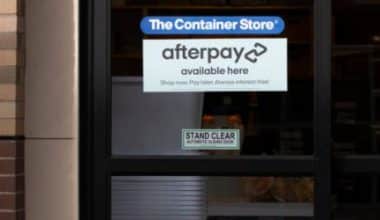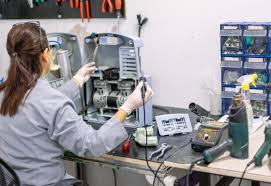Flexible spending arrangements are another name for flexible spending accounts( FSA). You can use tax-free FSA funds to cover several out-of-pocket medical expenses thanks to an arrangement made through your employer, and you can use it to care for a dependent. Insurance plans may pay for copayments, deductibles, qualified prescription drug costs, medical devices, medical supplies, and insulin costs.
Up to an employer-imposed cap, you decide how much money to put into an FSA. This cash is not subject to tax. You can save money tax-free in a flexible spending account to pay for dependent care and medical expenses. Your annual contribution to an FSA is capped at a certain amount. The IRS determines the FSA’s annual maximum contribution. In 2023, each employee may contribute a maximum of $3,050 annually to their FSA accounts for medical costs.
What Is FSA
A flexible spending account (FSA) is a type of savings account that provides the account holder with particular tax benefits. Employers may set up FSAs for their staff members, also referred to as “flexible spending arrangements.” You can contribute some of your regular income to the account, and employers are also able to make contributions to employee accounts.
How Does It Work?
The Flexible Spending Account allows you to routinely deduct a specific sum from your regular income. A similar deduction reduces the person’s taxable income. A lower taxable income reduces the individual’s tax liability because the deduction is deducted from earnings before taxes. Contributions to such an account are subject to an IRS-imposed upper limit. Whenever a person is married, the limit also applies to their spouse through their spouse’s employer. Additionally, the employer is free to make his discretionary contributions to the employee’s FSA. This kind of employer contribution is optional, though.
The money must be used within the plan year, regardless of the account’s name being “flexible” spending. The employer may, however, grant you a grace period of up to 2.5 months in addition to the regular tenure before allowing you to access the funds in the aforementioned account. On the other hand, the employer might let you carry the money over to the following plan year and increase it to $500 annually. Depending on his preference, the employer will offer either of these options.
The remaining balance is not returned to you if the funds are not used during the grace period or the plan year. It would therefore be best if you carefully considered how much of a contribution you should make to the FSA.
Types of Flexible Spending Accounts
#1. Dependent Care FSA
Another name for it is a dependent care reimbursement account or DCRA. The only purpose of this account is to cover the dependent person’s expenses. Such an account may be used for expenses related to dependents, including daycare, eldercare, preschool, or any other related costs. For the tax year 2023, the maximum contribution to a dependent-care FSA is $5,000 for married taxpayers filing jointly as well as separately as well as $2,500 for all other taxpayers.
#2. Health Care FSA
The money saved up in such an account may be applied to qualified medical, vision, dental, and other expenses. Typically, use is prohibited for non-permitted purposes.
#3. LPFSA
The term refers to a Limited Purpose Flexible Spending Account. You can use it in conjunction with a health savings account. The available funds may also be used to pay for any other purpose mentioned in the notification, like dental and vision expenses. A high-deductible health plan (HDHP) and a health savings account (HSA) are prerequisites for LPFSA enrollment. If you need to pay for anticipated or routine dental or vision expenses and would prefer to do so tax-free, these are great options.
A limited-purpose FSA is more limited because it can only be used to cover certain costs associated with a high-deductible health plan (HDHP), such as those related to dental and vision care after the plan holder has met the deductible.
#4. PDFSA
The phrase means Post Deductible Flexible Spending Account. The IRS permits a minimal deductible sum. If the minimum deduction threshold is met, these funds are applied to section 213d medical expenses.
What Is FSA Eligible
What is deemed to be “medical care” concerns the IRS greatly. According to the definition of medicine, it must focus on both the preservation of any organ or bodily function and the detection, relief, prevention, or cure of disease. The following purposes are permitted for the use of FSR funds:
FSAs for health care can be used to purchase over-the-counter medicines, medical supplies, and equipment like:
- Prescribed medications from a doctor.
- Supplies for testing blood sugar.
- Birth control.
- Cold and flu medicine.
- Breast pumps.
- Pregnancy tests.
- Menstrual pads and tampons.
- Insulin.
- Bandages.
- Crutches.
- Reading glasses.
- Acupuncture.
- Pain relief drugs.
- Sunscreen.
- Chiropractors.
- Psychological treatment.
- Smoking cessation programs.
You are not eligible for reimbursement for over-the-counter drugs, payment of health insurance premiums, or any other cost-related restrictions. So, make sure you can use FSA funds before making a sizable medical purchase.
The Benefits and Drawbacks of Providing Employees With an FSA
Both employees and businesses can benefit from FSAs, but they can also lose out. You can help your HR team and employees choose to participate in the plan more wisely by helping them to understand the advantages and disadvantages of flexible spending accounts.
Benefits of FSA
Reimburse Medical Care Payments. Pretax contributions to an FSA may be utilized for this purpose, which is defined as including sums paid for the detection, mitigation, or prevention of diseases or ailments affecting any bodily structure.
Owners of FSAs may use the account to pay for their medical expenses as well as those of their dependents and spouses who have qualifying medical expenses.
FSAs provide coverage for a variety of medical equipment purchases, including crutches, bandages, and diagnostic devices. FSA funds may be used to reimburse expenses for prescription drugs, including over-the-counter (OTC) medicines for which you had a prescription and insulin.
Payback of insurance policy deductible sums: FSAs may be used for both this and to reimburse the account holder for co-payments for healthcare services.
FSAs can be incorporated into a wide range of benefits that aid in hiring and retaining staff. Additionally, employer payroll tax and FICA contributions may decrease as a result of FSAs. You can use FSAs to balance out any increases in cost-sharing between you and your employees. Finally, the plan’s administrative costs are deducted from income.
Drawbacks of FSA
Certain treatments or medical costs are not covered: Costs for cosmetic surgery, as well as those for things or services that are only good for your general health, like gym memberships, are not reimbursed.
There is a “use it or lose it” clause for funds: Typically, you have one plan year to spend the funds in an FSA. However, your employer might give you the choice between two options: a “grace period” of up to 2 1/2 more months to use the funds in your FSA, or the ability to carry over up to $610 per year to use starting on January 1, 2023.
Not a valid method of payment for insurance premiums: Even though FSAs can pay for insurance deductibles, they cannot be used to purchase insurance. Employees run the risk of losing FSA funds if they do not use them all.
The Uniform Coverage Rule must be followed. Therefore, as soon as the plan is in place, employees are qualified for full reimbursement, even if they have not yet made their full contribution. Employees may leave their company before using their contribution, in which case the company will be liable for the full reimbursement.
What Are FSA and HSA
A health savings account is a personal account, not connected to your employer or employment. You need a high-deductible health plan (HDHP) with a minimum deductible of $1,400 for individuals and $2,800 for families to use an HSA. For individuals and families, the annual contribution cap for HSAs is higher at $3,550 and $7,100, respectively. HSAs are not just a piggy bank for medical costs; you can invest in them with tax-deductible contributions that grow tax-deferred. Additionally, there are no taxes on qualified medical costs that you pay for with an HSA.
HSAs roll over automatically every year without expiration. Once you reach the age of 65, you can take tax-free withdrawals from your HSA savings. You can withdraw money earlier than that as well, but doing so will result in income tax due as well as a 20% penalty.
Employers can enable pretax money saving for specific expenses by using flexible spending accounts and health savings accounts. Several different health-related expenses are eligible for FSA reimbursement. HSAs are frequently provided alongside high-deductible health insurance plans to assist in covering the cost of services obtained before the deductible has been met. HSA plans, in contrast to FSAs, allow for year-end rollovers and are accessible to people who work for themselves.
The main difference between health savings accounts (HSAs) and flexible spending accounts (FSAs) is that an HSA is owned and controlled by an individual, whereas FSAs are employee-owned and offer fewer flexibility options. The money in your FSA could be lost if you quit your job, but you can keep (and roll over into another HSA account) any money in your HSA.
What Is FSA Dependent Care
Dependent Care FSAs enable employees to save money (tax-free) for childcare expenses. It is important to note that these accounts are not just for paying for medical costs; they can also be used to pay for things like daycare or transportation for your elderly (dependent) relative to and from doctor appointments. Employees can contribute up to $5,000 annually per household to a DCFSA. You can use funds from your DCFSA to support any tax-dependent family members (including your spouse) under the age of 14 and those who are incapable of providing for themselves.
Your FSA for dependent care can be used to pay for costs associated with looking after minors under the age of 13 or dependent adults who are unable to care for themselves. These are examples of eligible costs:
- After-school programs.
- Babysitting (work-related).
- Day camp.
- Nanny.
- Nursery school.
- Preschool.
- Adult or senior daycare.
The cost of tutoring, sleep-away camp, or school tuition cannot be covered by dependent care FSA funds.
Tips for Flexible Spending Accounts
#1. Find Out About the “Grace Period” of Your Plan
The majority of FSAs end after the plan year, not necessarily the calendar year.
The inclusion of a grace period, which gives you more time to accrue medical costs that can be paid for with funds still in your flexible spending account, is common in plans. You have until March 15th to incur these expenses if your plan is calendar-based. This two-and-a-half-month window of opportunity is available to you.
#2. Determine the “Carry Over” Amount for Your Plan
You can roll over a portion of your FSA to the following year so that you can continue making contributions to your plan. Although some plans do not have a carryover amount, $500 is a generally recognized carryover amount. You can make sure you get the most out of your money by paying close attention to your plan’s grace period and carryover limits.
#3. Collect All of Your Receipts
No matter, if your plan has a reimbursement system or a debit card that you use only for medical expenses, getting and keeping your receipts, is crucial. If you want to use money from your flexible spending account to cover an expense, you must be able to prove that the expense was allowable.
#4. Plan at the Beginning of the Year
When deciding how much to contribute in the future to your flexible spending account, it is best to take into account your past performance. If you have access to an accountant who keeps good financial records or if you keep good financial records yourself, you can figure out exactly how much you spent on medical expenses in the previous year. After that, determine which expenses your FSA plan would pay for.
Try to estimate your annual spending on FSA-eligible medical expenses, even if your record-keeping is not the best.
#5. Utilize Your FSA as Often as Possible
FSAs encourage you to use them whenever you can because you have to use them or lose them. You must always use your FSA (when purchasing Eligible Goods or Services) to pay for out-of-pocket expenses such as copayments, prescription costs, and deductibles that are not covered by your health plan.
What Is the Meaning of FSA?
Having a flexible spending account (FSA) entitles the account holder to particular tax benefits. Employers may set up FSAs for their staff members, also known as “flexible spending arrangements.” this is a unique account into which you deposit money and which you use to cover a portion of your out-of-pocket medical expenses.
What Is the Difference Between Hsa and Fsa?
In addition to these key distinctions, these two kinds of plans differ in the following ways:
Unlike FSAs, which do not accrue interest, HSAs do and the interest is tax-free. Employees’ HSAs may transfer with them from one job to another. If an employee quits their job, their FSA plan is forfeited.
FSA-eligible employees are required to make an annual contribution. Participants in HSAs have the option to adjust their contribution level at any time during the year. HSAs allow for withdrawals with a fee. Withdrawals are not allowed from FSAs.
If I Quit My Job, What Happens to My FSA?
You cannot take your FSAs with you when you change jobs because they belong to your employer. Consequently, any funds in your FSA are lost at the time of your departure. You may be able to use funds from your FSA during this time if your severance package includes an extension of your health benefits for a specific period.
What Are the Benefits of an FSA?
Remaining Funds May Rollover. Employers can now if they so choose, permit your FSA to carry over up to $500 at year’s end thanks to new IRS regulations. Alternatively, your employer might grant you an extra two and a half months of grace during which you can keep using your money after the fiscal year is over.
Spend only as necessary. FSAs provide coverage for a wide range of expenses, including prescription and over-the-counter medications, vaccinations, medical supplies, eye exams, eyeglasses, acupuncture, and many other things. Even over-the-counter medications like Advil and Tylenol are covered by FSAs, but to be fully reimbursed for these items, a prescription from a doctor is required.
How Do I Access My FSA Money?
Through your FSA provider, you can check your FSA balance, make reimbursement claims or track them, and find out what payments were taken out of your account. You will primarily use the FSA debit card that is provided to you to access your health care FSA funds.
The FSA card is automatically given to healthcare FSA participants upon enrollment.
How Do I Get Cash From My FSA Card?
After you have funded your FSA, you can use the money in the account to cover eligible medical costs or make purchases of approved products. Using your FSA card at the register in the same manner as any other debit or credit card is one way to accomplish this.
Always remember to keep your receipts, have a backup plan, and use your FSA only for proper expenses. The IRS may ask you to provide evidence that you used your FSA funds for authorized expenses if you are ever subject to an audit.
Can I Transfer My FSA to My Bank Account?
The simple “no” is the response to this query. Money from an FSA may only be used for specified healthcare-related expenses. You cannot move that money to another account, according to the IRS. The IRS prohibits the exchange of money between accounts or its transfer. Therefore, you can only use the funds in your Dependent Care FSA and Health Care FSA for expenses related to dependent care.
Can FSA Be Used at ATMs?
Sadly, ATM withdrawals made with FSA cards are not permitted. Only eligible medical goods and services may be purchased with these cards. You have access to the money in your flexible spending account through your FSA debit card. You have the option to direct pretax money from your paycheck to this account, which is set up in conjunction with your health insurance. After that, those funds can be applied to specific admissible medical costs.
Conclusion
You can set aside a portion of your pre-tax income for medical and dental expenses using a flexible spending account (FSA). It was made for employees by an employer. Employers may also make contributions to their employees’ FSAs. The employee must use distributions from the account to cover their qualified medical and dental service costs. An additional choice is FSAs for dependent care. People are only allowed to save up to a certain amount annually, and the majority of the funds must be used during the calendar year in which they are saved. FSA account holders should carefully consider their contribution amounts, as a result, to prevent losing any money that is ultimately not needed.
There is no one-size-fits-all approach to flexible spending accounts. Forecast your annual health and dependent care costs, along with general drugstore spending, to help you decide if an FSA is the right choice for you. You should also familiarize yourself with the available FSA plans. Reading the benefit rules will help you understand what is covered by your employer’s benefits. If you need assistance, contact the benefits department.
Related Articles
- What Is HSA? Everything You Need To Know
- WHAT IS FSA: Eligibility, ID, Medical & Difference
- Dependent Care FSA: Meaning, How it Works, Rules, Eligible Expenses & 2023 Limits






